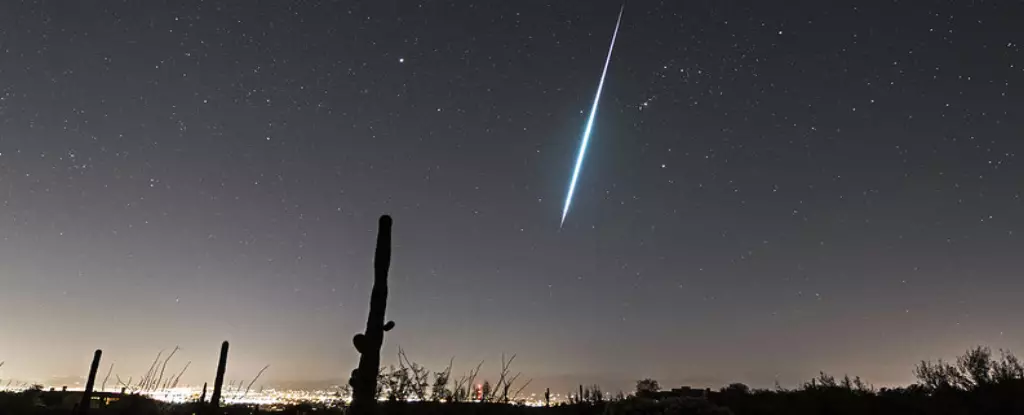As the year draws to a close, stargazers and astronomy enthusiasts alike eagerly await one of the most illustrious celestial events: the Geminid meteor shower. This year, the peak of the meteoric display will transpire on the night of December 13-14, 2024. With its phenomenal light show, the Geminids have established themselves as a highlight in the astronomical calendar, captivating observers with their brilliance. However, this year, a few hurdles may dampen the experience, yet understanding the nuances of these conditions can enhance the stargazing adventure.
The allure of the Geminids is matched this year by the winter chill and lunar brightness, which may challenge viewers. The shower aligns with a near-full moon, which will be approximately 98% illuminated, causing some obstruction to the visibility of fainter meteors. Cold temperatures often discourage many would-be observers from venturing outdoors, yet those who brave the frigid air will still be rewarded. The key lies in finding the right environment and timing for observation.
Peak meteor activity is expected at 3:00 Universal Time on December 14, equating to 10:00 PM EST on the preceding night. During this period, astronomers can expect to see as many as 120 meteors per hour, creating a dazzling display mainly visible in Western Europe and North America. The radiant point for the Geminids lies in the constellation Gemini, near the bright star Castor. This means that the meteor shower becomes noticeable even in the hours leading up to midnight, often allowing early risers or dedicated night owls a chance to enjoy the spectacle.
The origin of the Geminid meteor shower, the enigmatic ‘rock-comet’ 3200 Phaethon, blurs the boundaries between asteroids and comets. With an orbit of just 1.4 years, this celestial body has piqued the interest of astronomers, prompting Japan’s mission DESTINY+ to target it for further study in 2028. This venture aims to unveil the mysteries surrounding Phaethon and its relation to the Geminids. Understanding its characteristics may shed light on both the meteor shower’s intensity and the nature of interstellar bodies.
The Geminid meteor shower has been captivating observers since 1862, and recent decades have seen a marked increase in their activity, surpassing the once-coveted Perseids. Observers interested in participating in meteor shower science should not overlook the opportunity to track this transient phenomenon; a simple count and report to the International Meteor Organization can contribute valuable data.
To fully appreciate the brilliance of the Geminids, ideal observation conditions are vital. The proximity of the moon, which will be positioned near the constellation Taurus at its peak, can interfere with the view of dimmer meteors. Therefore, selecting an observation site that allows for moon shielding—be it behind a hill or tree—is advisable. Additionally, the mornings leading up to the peak are ideal for viewing, as the moon’s position is lower on the horizon, minimizing its glare.
For photography enthusiasts, automating the capturing process with a wide-field DSLR camera positioned strategically can yield fantastic results. Directing the camera at a 45 to 90-degree angle from the radiant point can enhance the likelihood of catching brilliant meteoric trails.
Despite the challenges posed by weather and lunar brightness, the 2024 Geminid meteor shower presents a unique opportunity for star lovers to end the year on a high note. The combination of the captivating meteor display, intriguing celestial origins, and the collective experience of observation fosters a sense of wonder and connection to the universe. Plan your viewing, prepare your equipment, and most importantly, look up to see the wonders that await in the night sky. Don’t miss this chance to witness the beauty of the cosmos as 2024 comes to a thrilling conclusion.


Leave a Reply